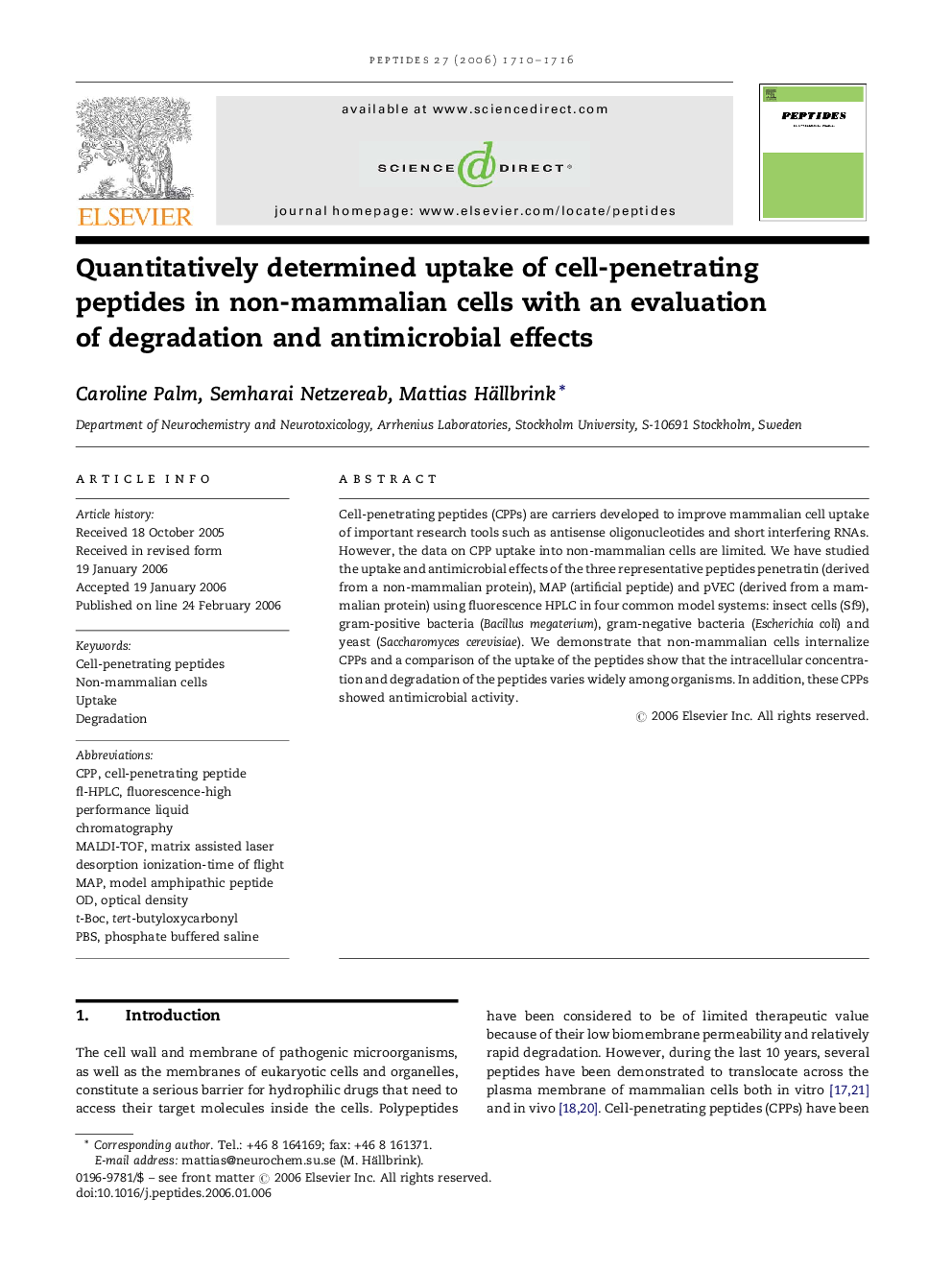| Article ID | Journal | Published Year | Pages | File Type |
|---|---|---|---|---|
| 2008228 | Peptides | 2006 | 7 Pages |
Cell-penetrating peptides (CPPs) are carriers developed to improve mammalian cell uptake of important research tools such as antisense oligonucleotides and short interfering RNAs. However, the data on CPP uptake into non-mammalian cells are limited. We have studied the uptake and antimicrobial effects of the three representative peptides penetratin (derived from a non-mammalian protein), MAP (artificial peptide) and pVEC (derived from a mammalian protein) using fluorescence HPLC in four common model systems: insect cells (Sf9), gram-positive bacteria (Bacillus megaterium), gram-negative bacteria (Escherichia coli) and yeast (Saccharomyces cerevisiae). We demonstrate that non-mammalian cells internalize CPPs and a comparison of the uptake of the peptides show that the intracellular concentration and degradation of the peptides varies widely among organisms. In addition, these CPPs showed antimicrobial activity.
